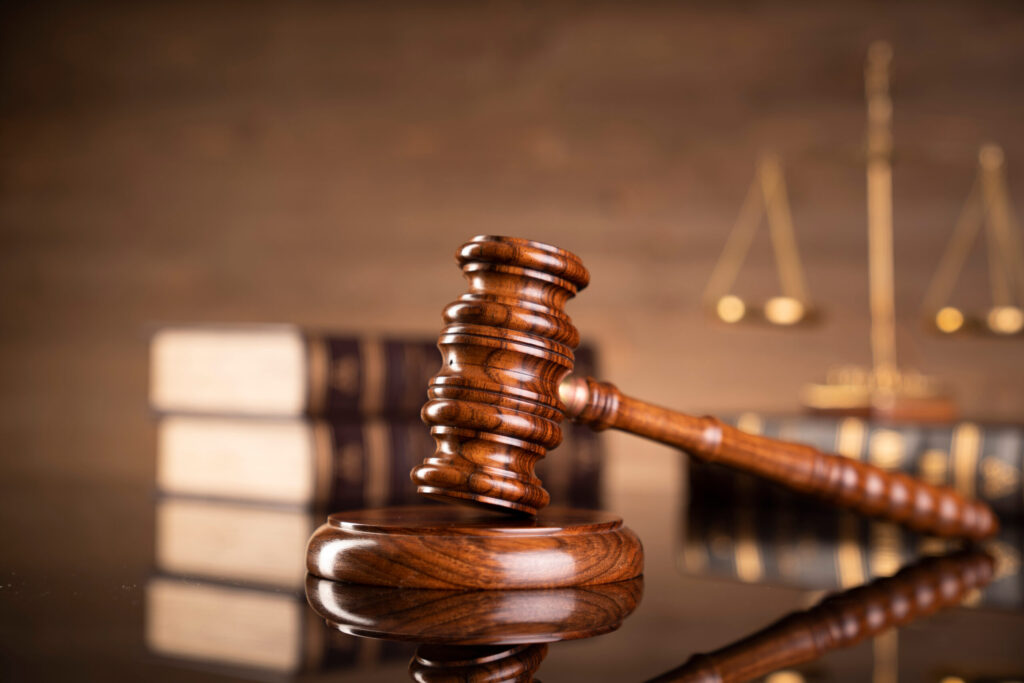The feminist movements in India has witnessed several landmark moments that have served as turning points in its evolution. Cases like the Mathura Rape Case (1972) and the Nirbhaya Case (2012) sparked widespread public outrage and led to significant legal reforms. These moments highlighted the systemic issues of gender-based violence and the urgent need for societal and legal change. Each of these incidents became rallying points, mobilizing grassroots movements, feminist organizations, and policymakers to address the inequalities faced by women and strengthen women’s rights advocacy in the country.
The Mathura case is widely regarded as a turning point in India’s feminist movement. The public outcry and the subsequent activism that emerged in response to the Supreme Court’s ruling helped stimulated women’s organizations across the country for feminist movements in India. Several women’s rights groups were formed as a direct result of the case, including Forum Against Rape (FAR), which later evolved into the Forum Against Oppression of Women (FAOW). These organizations organized widespread protests and demonstrations, demanding that the government address the issues of sexual violence and the failings of the judicial system.
The case also led to extensive media coverage and greater awareness of the struggles faced by women seeking justice in cases of sexual assault. The feminist movements in India seized on the case to highlight the need for reforms, particularly in laws concerning rape and the treatment of rape survivors. This activism ultimately ended in the reform of Criminal Law (Amendment) Act of 1983, which introduced several key legal reforms, such as stricter punishment for custodial rape and shifting the burden of proof to the accused in custodial rape cases.
Reaction from Legal Experts in Mathura Rape Case
Prominent legal scholars, such as Upendra Baxi, Lotika Sarkar, Vasudha Dhagamwar, and Raghunath Kelkar, played a crucial role in opposing the Supreme Court’s decision. These scholars expressed their discontent in an open letter addressed to the Supreme Court, which they published in 1979. The letter specifically criticized the Court’s failure to understand the distinction between submission and consent. The scholars argued that Mathura’s submission to the assault, given her vulnerable position and the power dynamics between her and the police, did not imply consent. The letter emphasized that “Consent involves submission, but the converse is not necessarily true.”
This letter became a landmark moment in Indian legal discourse for feminist movements in India, highlighting the systemic failure of the judiciary to recognize the trauma faced by victims of custodial rape. Baxi and the others raised concerns about the decision’s impact on women’s rights and the broader implications of allowing such a precedent to go unchecked.
Open Letter Critiquing the Supreme Court’s Judgment
The open letter penned by these legal luminaries not only criticized the Court’s reasoning but also questioned societal biases around pre-marital sex and how these biases influenced the judgment. The Supreme Court, by noting that Mathura was “habituated to sex,” essentially implied that her sexual history diminished her credibility as a rape victim. The scholars firmly rejected this line of reasoning, pointing out that a woman’s sexual past should have no bearing on whether she consented to sexual activity in a particular instance.
The letter also criticized the fact that the Court overlooked the power imbalance between the police officers and Mathura, who was a poor, young, and illiterate tribal woman. In a custodial setting, the inherent authority and control exercised by the police over a detained person made it nearly impossible for her to resist their advances effectively. This power dynamic, the scholars argued, should have been a key factor in determining the presence of coercion rather than consent.
The legal scholars’ critique and the public protests following the Mathura rape case verdict brought about a seismic shift in India’s approach to women’s rights and sexual violence for feminist movement in India. The case served as a catalyst for legal reforms, while also exposing the deep-rooted patriarchal biases in society and the judiciary. The Mathura case is remembered as one of the most pivotal moments in the history of the feminist movement in India.
Formation of Women’s Rights Forums for feminist movements in India
The Mathura rape case of 1972 and the subsequent Supreme Court verdict in 1979 became a pivotal moment in the formation of several women’s rights organizations and forums in India. The case exposed the deep flaws in the legal system’s handling of rape and sexual violence, particularly the insensitivity toward survivors. This led to an unprecedented level of activism and the establishment of collective movements to demand reforms and better support for victims of gender-based violence.
- Creation of Various Women’s Forums and Collectives: In the aftermath of the Supreme Court’s acquittal of the accused policemen in the Mathura case, multiple women’s groups formed to channel public outrage into structured activism. The primary aim of these groups was to push for legal reforms concerning sexual violence and to ensure that cases like Mathura’s would not be dismissed or overlooked again.
- Forum Against Rape (FAR): One of the most prominent organizations created in response to the Mathura case was the Forum Against Rape (FAR), which was later renamed Forum Against Oppression of Women (FAOW). This organization emerged from the collective efforts of activists and scholars like Lotika Sarkar, who felt that the judgment highlighted a failure to understand the plight of rape survivors, particularly in cases where power dynamics were at play, such as custodial rape.
- Saheli: Another significant collective formed around this time was Saheli in Delhi, which became a crucial platform for raising awareness about issues related to sexual violence and gender-based oppression. Saheli worked as a feminist movement in India actively to assist victims of sexual crimes and played a role in educating the public and policymakers about the urgency of reforming rape laws.
These forums were not isolated entities but were part of a broader network of grassroots activism that began to flourish across the country, particularly in major cities like Mumbai, Delhi, and Pune. Women’s rights activists, lawyers, and scholars worked together to not only advocate for justice for Mathura but also highlight the broader structural issues that allowed such injustices to occur.
Role of These Organizations in Advocating for Legal Reforms and feminist movements
The activism sparked by the Mathura case led to major reforms in India’s legal approach to rape and sexual violence. The forums played a vital role in organizing national conferences that brought attention to the urgent need for reforms in rape laws, custodial accountability, and the treatment of survivors within the judicial system.
- Legal Advocacy: One of the most significant achievements of these organizations was their successful lobbying for changes in the Criminal Law (Amendment) Act of 1983. This Act introduced stringent punishments for custodial rape and shifted the burden of proof to the accused in such cases, making it easier for victims to seek justice. These reforms were largely the result of sustained pressure from women’s rights groups, who conducted campaigns, protests, and conferences to highlight the weaknesses in existing laws.
- Supporting Rape Victims: Women’s collectives like FAOW and Saheli also played an instrumental role in providing emotional and legal support to survivors of rape and sexual violence. These forums aimed to create a more survivor-centric approach to dealing with rape cases, advocating for the dignity and rights of survivors who often faced societal stigma and disbelief. These organizations played an instrumental role in highlighting issues of patriarchal oppression, gender-based violence, and legal reforms. FAOW, in particular, organized national conferences that initiated debates on necessary legal changes to safeguard women’s rights.
- Public Awareness Campaigns: Beyond legal reforms, these organizations worked tirelessly to change public perceptions about rape and sexual violence. They challenged the common cultural biases that blamed victims, particularly by debunking myths about “consent” and the notion that a woman’s past sexual history should influence the outcome of rape cases. These groups-initiated awareness campaigns and public demonstrations that helped change the discourse around sexual crimes in India, demanding that the focus should be on the actions of the perpetrators rather than the victim’s character.
- International Women’s Day Protests: In continuation of their activism, various women’s rights groups across the country, including FAOW and Saheli, took to the streets during International Women’s Day to protest the handling of the Mathura case and call for broader changes to the legal system. These demonstrations were not only a form of protest but also a celebration of the resilience of women in the fight against gender-based violence.
- Long-Term Impact: The mobilization of women’s forums after the Mathura case laid the groundwork for the modern feminist movement in India. These forums continue to play an active role in advocating for women’s rights, particularly concerning laws on sexual violence, domestic abuse, and gender equality in the workplace. The activism sparked by the Mathura case remains a landmark moment in the history of women’s rights in India, demonstrating the power of collective action in bringing about systemic change.
Today, the impact of these organizations can still be seen in the way Indian law treats sexual violence, and their legacy continues to inspire new generations of activists fighting for gender justice.
Legislative Impact and Legal reforms in India
The aftermath of the Mathura rape case led to significant legal reforms in India, with the introduction of the Criminal Law Amendment Act, 1983. This landmark legislation was passed in response to the growing public outrage over the handling of rape cases and the systemic flaws exposed by the Mathura case, particularly the issue of custodial rape.
Introduction of the 1983 Criminal Law Amendment Act: The Criminal Law Amendment Act of 1983 (No. 43) was a critical step in addressing the gaps in Indian rape laws. This legislation introduced stringent provisions to protect women from custodial rape where a person in a position of authority, such as a police officer or public servant, uses their power to commit sexual violence. The Criminal Law Amendment Act of 1983 is seen as one of the most significant legislative outcomes of The Mathura case. The enactment of Section 228A of the IPC, which prohibits the disclosure of a rape victim’s identity, was also a direct consequence of this case. This provision was designed to prevent further trauma and societal ostracization faced by victims of sexual violence.
Specific Provisions Regarding Custodial Rape: One of the most notable aspects of the 1983 amendment was the introduction of specific provisions for custodial rape under Section 376 of the Indian Penal Code (IPC). This law categorized rape committed by police officers, public servants, and those in positions of authority as particularly heinous, warranting harsher punishment. The sections introduced were:
Here is a brief description of each section of the Indian Penal Code (IPC) and these sections are designed to ensure that people in positions of authority who exploit their power for sexual abuse face harsher penalties.
- Section 376(A) – Rape by a Person in Authority: This section deals with cases where a person in a position of authority, such as a police officer or public servant, commits rape. The law treats such offenses more severely due to the abuse of power and trust involved.
- Section 376(B) – Rape Committed by a Person on the Premises Under Their Authority: This provision applies when a person in authority, like a police officer or government official, commits rape on premises where they have control, such as government offices or police stations. The law holds them accountable for exploiting their position to commit the crime.
- Section 376(C) – Custodial Sexual Misconduct: This section targets sexual offences committed by individuals in authority over persons in custody, such as police officers or prison wardens. It addresses the abuse of power over those in a vulnerable state, like prisoners or detainees.
- Section 376(D) – Gang Rape by Those in Authority: Section 376(D) deals with gang rape committed by multiple persons in authority, such as police officers, military personnel, or public servants. The law is particularly severe in such cases due to the compounded abuse of power and the gravity of the offense.
These provisions addressed the unique power dynamics in such cases, acknowledging the vulnerability of victims when the perpetrators hold significant authority over them.
Shift in the Burden of Proof in Custodial Crimes: Another critical aspect of the 1983 Act was the shift in the burden of proof. Traditionally, in criminal cases, the burden of proof rests on the prosecution. However, under the new provisions, once sexual intercourse was established in custodial rape cases, the burden shifted to the accused to prove that the intercourse was consensual. This was a major shift, aimed at ensuring that victims were not burdened with proving lack of consent, especially in cases where authority figures were involved.
Amendments to the Indian Evidence Act: The Indian Evidence Act was also amended under this law, particularly with the inclusion of Section 114A, which introduced a rebuttable presumption in cases of custodial rape. Under this provision, if the victim stated that she did not consent to the intercourse, the court was bound to presume that there was no consent, unless the accused could provide convincing evidence to the contrary. This presumption aimed to prevent the victim’s credibility from being questioned solely based on lack of physical injury or outward signs of resistance.
Additionally, the Act introduced other important reforms, including:
- In-camera trials to protect the privacy and dignity of the rape victim.
- Provisions prohibiting the disclosure of the victim’s identity to the public.
- Tougher sentences for those convicted of custodial rape.
Legacy of the Mathura Case
The Mathura rape case is considered a turning point in India’s women’s rights movement. The public outrage and legal criticisms following the Supreme Court’s acquittal of the accused in 1979 stimulated feminist movements in India across the country. Women’s organizations, legal scholars, and activists came together to demand reforms in the treatment of rape cases, both in law and society.
Turning Point for the Women’s Rights feminist Movements
The case sparked widespread protests and public debates about the treatment of rape survivors in the legal system and the societal norms that silenced them. Prior to this case, many rape judgments were either misjudged or went unnoticed, but the Mathura case marked a watershed moment in bringing the issue of violence against women to the forefront of public consciousness. This led to the rise of women’s organizations that focused on supporting rape survivors and advocating for legal reforms.
Final Thoughts
The Mathura rape case and the subsequent Criminal Law Amendment Act of 1983 were transformative in feminist movements in India’s legal and social conditions concerning women’s rights. The amendments introduced specific provisions for custodial rape, shifted the burden of proof to protect victims, and brought about much-needed reforms in the Indian Evidence Act. More importantly, the Mathura Case and feminist movements in India inspired the legal changes which laid the foundation for a broader movement to challenge societal and institutional injustices against women.




